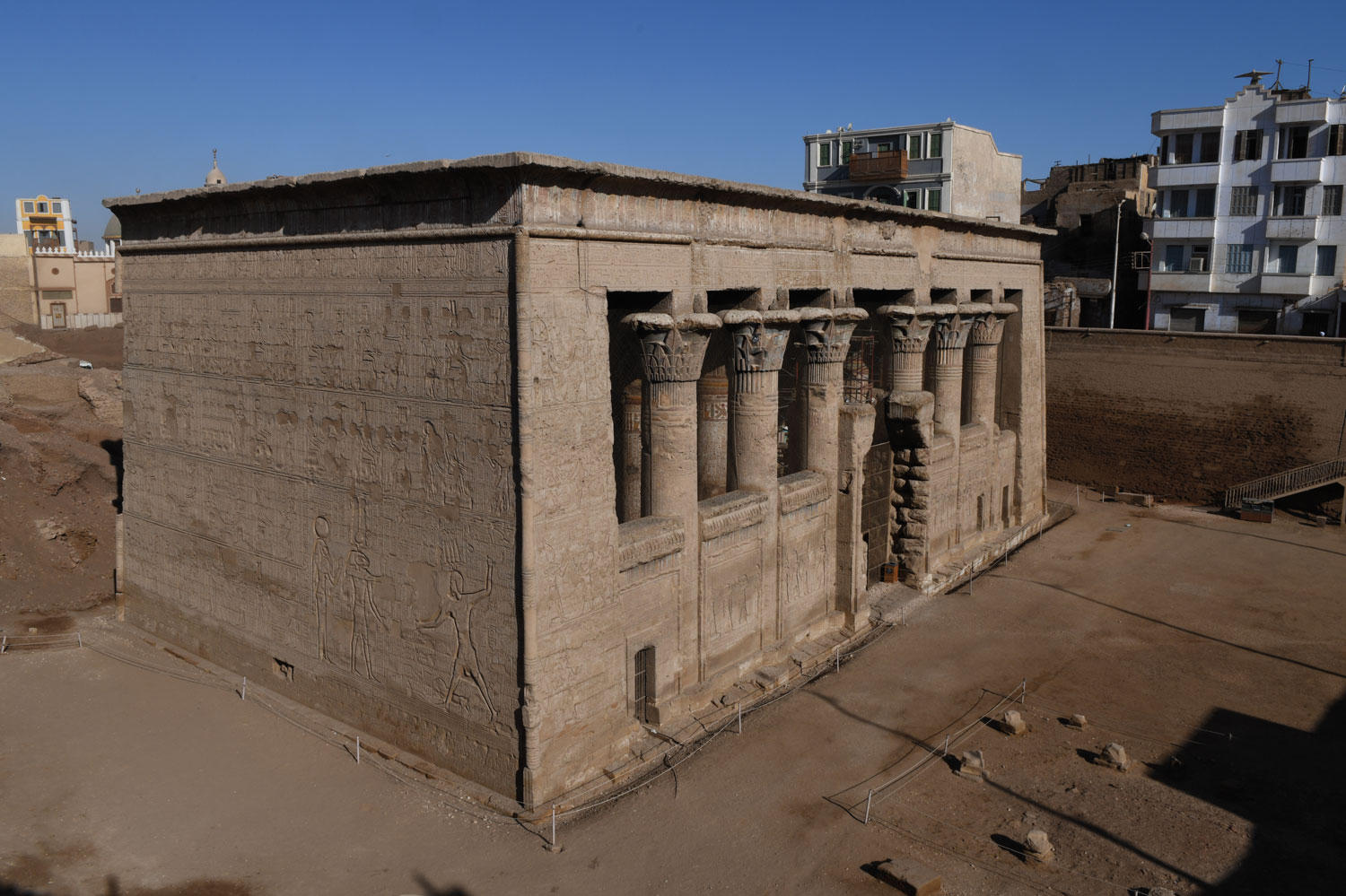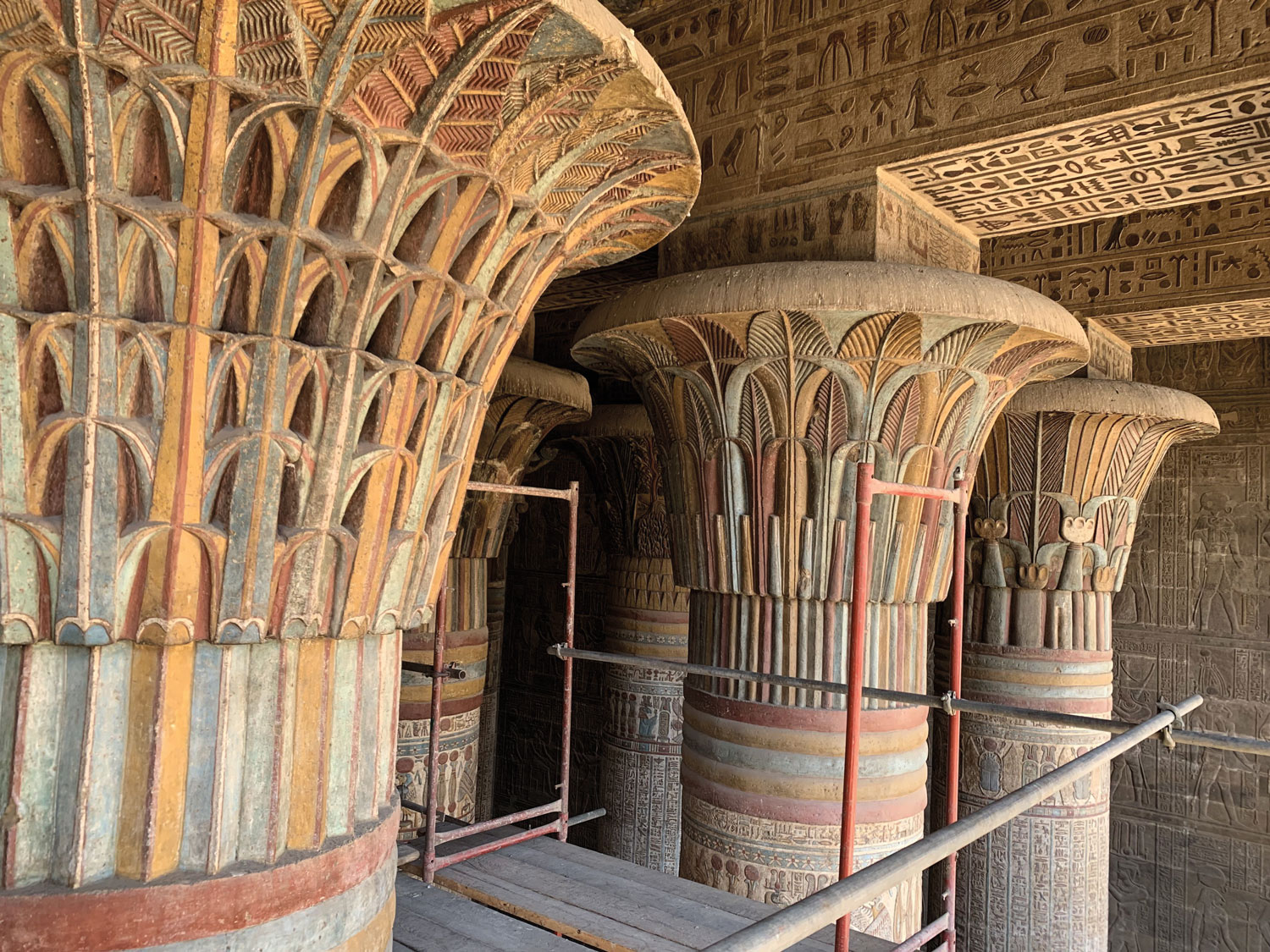Anthropology
Related: About this forumEuropean Hunter-Gatherers Sailed to North Africa 8,500 Years Ago
March 24, 2025
By Benjamin Leonard
By removing centuries of soot, researchers have uncovered the stunning decoration of a sanctuary dedicated to the heavens

In the Egyptian city of Esna, a highly decorated entrance hall completed during the mid-
An Egyptian Temple Reborn
Features March/April 2025
By Benjamin Leonard
By removing centuries of soot, researchers have uncovered the stunning decoration of a sanctuary dedicated to the heavens
Painted lotus-leaf capitals after cleaning in the entrance hall of the temple of Khnum, Esna, EgyptAhmed Emam/© Egyptian Ministry of Tourism and Antiquities
Some 100 major temples towered over the landscape of Roial neighborhood in the modern city of Esna on the west bank of the Nile in Upper Egypt. The temple was dedicated to the creator god Khnum, his family, and the goddess Neith. Now 30 feet below street level, the temple’s red sandstone pronaos, or entrance hall, is all that survives of what was once a larger complex. The other remnants of the temple, which stood behind the hall, are now buried beneath the city. In antiquity, the hall, which measures 120 feet long and 65 feet wide and stands 50 feet high, would have dwarfed the rest of the temple. Larger-than-life scenes carved on each of its exterior walls offered ancient worshippers a mere hint of the resplendent painted reliefs that still cover nearly every inch of the hall’s interior.

A painted relief on a column inside the hall features an oval cartouche containing the name of the Roman emperor Hadrian (reigned a.d. 117–138) flanked by Khnum, depicted as a ram, and Behedety, the falcon god of the midday sun.
Ahmed Amin/© Egyptian Ministry of Tourism and Antiquities

In the late third or early fourth century a.d., by which time the temple had presumably been closed, the residents of Esna began to dismantle its main sanctuary and repurpose the building blocks to build canals. They used the pronaos as a shelter for the next 1,500 years, and, in the nineteenth century, it became a warehouse for storing cotton and ammunition. Over that stretch of time, fires lit inside for illumination and warmth gradually coated the bright paintings on the ceilings, columns, and interior walls in thick layers of dirt and soot. Parts of the pronaos were buried beneath sand until the twentieth century.
In the 1950s, Egyptologist Serge Sauneron cleared away the debris obscuring portions of the exterior walls. He then turned to the interior, recording those carved reliefs and hieroglyphic inscriptions that were visible to the naked eye. Although Sauneron gradually published the inscriptions and select drawings of the pronaos’ decorations, his death in 1976 halted this documentation project. Most of the inscriptions he transcribed were never translated.

While cleaning the entrance hall, conservators revealed the original colors painted on column shafts and lotus-leaf capitals, as well as previously hidden hieroglyphic inscriptions on the crossbeams and walls.
Ahmed Emam/© Egyptian Ministry of Tourism and Antiquities
The hall’s reliefs were still completely covered in soot when, in 2018, a joint Egyptian-German team, led by Egyptologist Christian Leitz of the University of Tübingen and Hisham El-Leithy, undersecretary of state for documentation of the Egyptian Ministry of Tourism and Antiquities (MoTA), began to restore the designs’ vibrant colors to their former brilliance. Using primarily distilled water and alcohol, MoTA conservators supervised by Ahmed Emam have now cleaned the hall’s 18 interior columns, all seven of its ceiling bays, and sections of its southern and western walls. In the process, they have revealed hitherto hidden images and nearly 200 painted inscriptions on the ceiling and crossbeams that Sauneron hadn’t been able to see. “Salt crystallization had affected the colors and caused some flaking of the reliefs,” El-Leithy says. “The conservation team cleaned the layers of soot, dust, and dirt, and the bright colors of the paintings and inscriptions can now be appreciated.”
More:
https://archaeology.org/issues/march-april-2025/features/an-egyptian-temple-reborn/
Response to Judi Lynn (Original post)
eShirl This message was self-deleted by its author.
eppur_se_muova
(40,887 posts)I'd be interested in the article that matches the headline -- thanks !